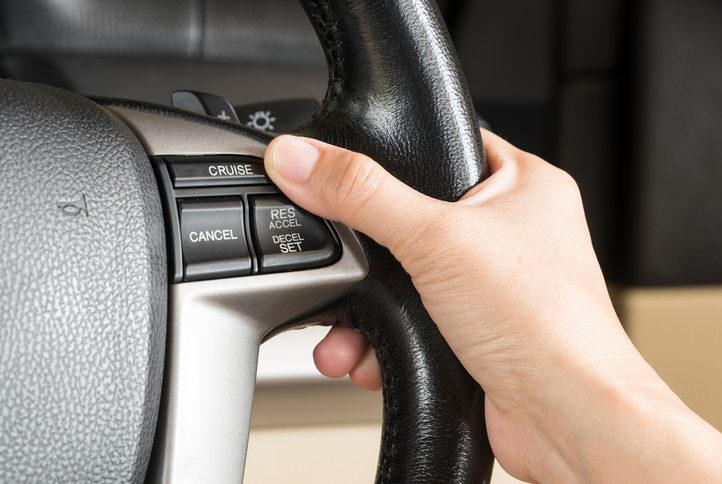Getting Up to Speed: How Cruise Control Works Explained for Students in Mechanic Training

Highway driving for long distances is made immeasurably better by cruise control. You just set the speed, take your foot off the gas, and enjoy the ride.
To the average driver, cruise control is just a button to be pressed. Take a peek at a car’s inner workings, and you can quickly see that something much more interesting is going on.
Want to learn a bit about how cruise control works? Here’s an inside look to get you up to speed on this technology.
Basic Cruise Control Automates Pressing a Foot to the Pedal, Without the Pedal
When a driver is controlling a car’s acceleration, they will press their foot on the accelerator or gas pedal to drive. This opens up the throttle valve, allowing more air into the engine. The system will correspondingly inject additional fuel, providing the mixture necessary for combustion and acceleration.
If a driver wants to maintain near-constant speed, they can enable cruise control. When cruise control is engaged, a cable connected to an actuator—basically a small motor—takes over control of the throttle valve. It keeps the valve open in a similar manner to what you would get if a constant level of pressure were to be maintained on the gas pedal.

Pressing on the accelerator will allow for an increase in acceleration, and releasing will usually return the car to whatever setting the cruise control was on. Engaging the brake or clutch will typically disengage the cruise control feature and return full control of acceleration to the driver.
Though there are a number of parts involved in cruise control, none are especially complicated. Repairs to the cruise control therefore tend not to be too expensive, as far as auto repair goes. For the actuator, for example, a professional with mechanic training will typically charge between $100 and $200, or more for more specialized vehicles.
Pros With Mechanic Training May See Adaptive Cruise Control Get Real Big, Real Fast
The trick with cruise control is that if a car’s controlled cruising speed is set to a faster speed than the car in front of it, the driver will often need to disengage the feature. Given that the point of cruise control is to reduce the amount of work a driver needs to do, this isn’t ideal.
If you’re currently heading into careers in the auto industry, you will likely soon see that adaptive cruise control is a good solution to this problem, and is set to become very popular. By using radar, lidar, or a camera system, a car with adaptive cruise control can monitor the speed of cars in front of itself. If it detects that its cruise control setting is faster than that of the other car, it will automatically reduce its speed to something more appropriate. This increases the amount of driving effort taken on by the car when cruise control is engaged, and could lead to potential reductions in driver fatigue. It’s also a feature that is highly important to the success of autonomous and semi-autonomous cars, both now and in the future.

Do you want to study how cruise control and other auto systems work?
Contact Automotive Training Centres to sign up for auto mechanic school in Toronto!

